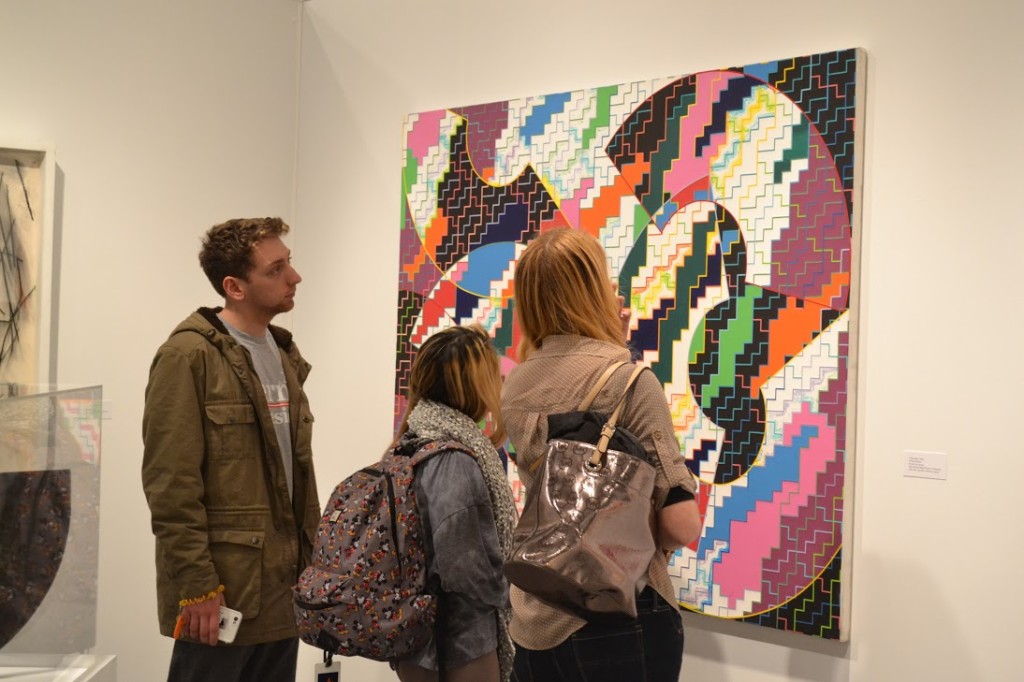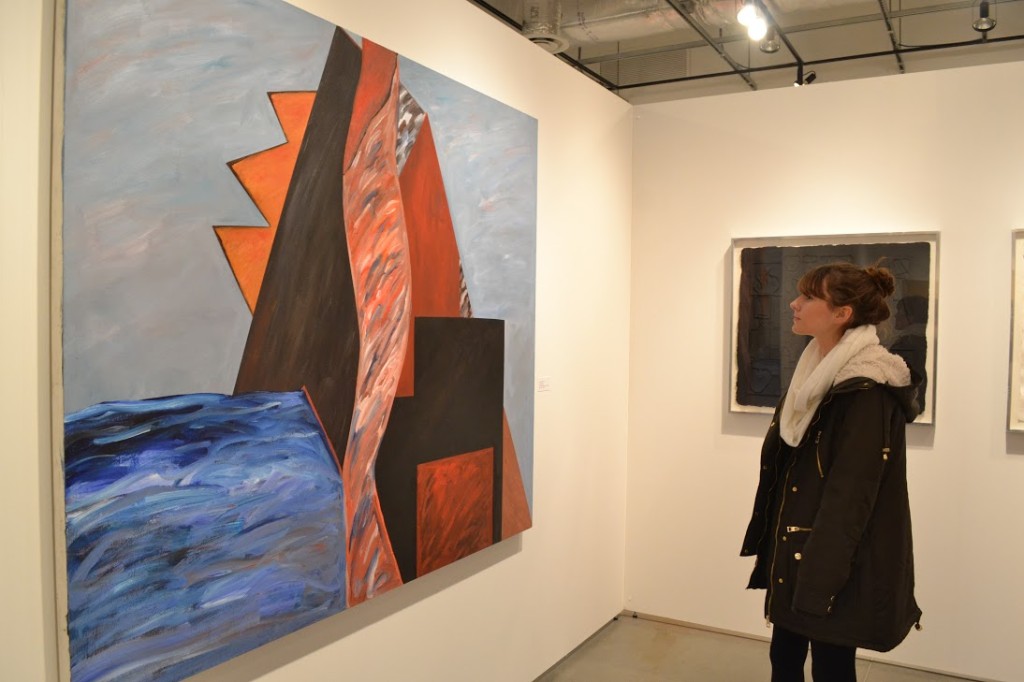By Melissa Natividade
Staff Writer
When imagining abstract or modern art, you may picture swirling colors and surreal scenes that warp reality. What many may not realize, however, is that the term is much more complex and encompassing.
Revealing the different dimensions of this style of art is the “Abstract Expressions: Selected Works from the New Jersey State Museum” exhibition, now on display in the College’s art gallery in the Arts and Interactive Multimedia Building.
The special exhibition, featuring pieces loaned from the New Jersey State Museum, includes over 34 abstract artworks from 1950 to today by American artists who all dabbled in a spectrum of textures and mediums. The artists include Richard Anuszkiewicz, Clinton Hill, Ka Kwong Hui, Yayoi Kusama and Susan MacQueen.

“When people hear ‘abstraction,’ they think of Jackson Pollock or art with no subject,” said Margaret M. O’Reilly, curator of fine art at the New Jersey State Museum. “They think ‘I can do that.’ But it’s not so simple. It was groundbreaking when (Wassily) Kandinsky (was painting biomorphic forms). It was going against what was expected and Americans were slower to accept it. As an artist, if you don’t have talent and a basic understanding of the precepts of art — color, form — you can’t do it.”
As junior art and secondary education double major Abby Saiia was quick to observe, the diversity of artwork and the nature of inspiration of the pieces was large, from Anuszkiewicz’s optical illusion pieces and geometric abstractions to the free flowing organic pieces of Lee Gatch and Dahlia Elsayed.
O’Reilly saw the exhibit at the College as a special opportunity to teach about the wide-ranging nature of abstract art, which is why she searched for the actual art pieces rather than just the digital archived versions. She sorted through racks and drawers to find a middle ground between the most well-known pieces and works that haven’t been exhibited in a while. Some worth special notice, such as those of Anuszkiewicz, were included in the collection.
“Abstraction is a broad term,” O’Reilly said. “At one end of the spectrum, abstract paintings may present subjects that are slightly distorted, yet still wholly recognizable. Contrasting these are works which are completely non-objective — that is, works which employ form, line, color or texture with no recognizable subject matter.”

The exhibition, made possible in part by the Mercer County Cultural and Heritage Commission, opened with a reception on Wednesday, Jan. 27, with well over 100 attendees, according to the gallery’s records.
In summarizing abstraction, O’Reilly referenced the father of abstract painting, Kandinsky, by sharing a quote of his: “Of all the arts, abstract painting is the most difficult. It demands you know how to draw well, that you have a heightened sensitivity for composition and for colors and that you be a true poet. This last is essential.”
The exhibit is open from Thursday, Jan. 27, to Sunday, Feb. 28, and can be visited on Tuesdays through Thursdays from noon to 7 p.m. and Sundays from 1 p.m. to 3 p.m.






